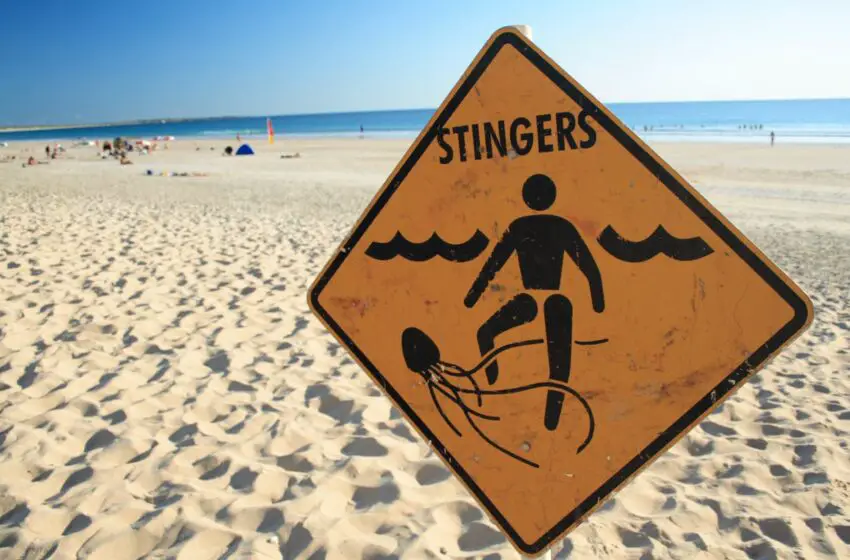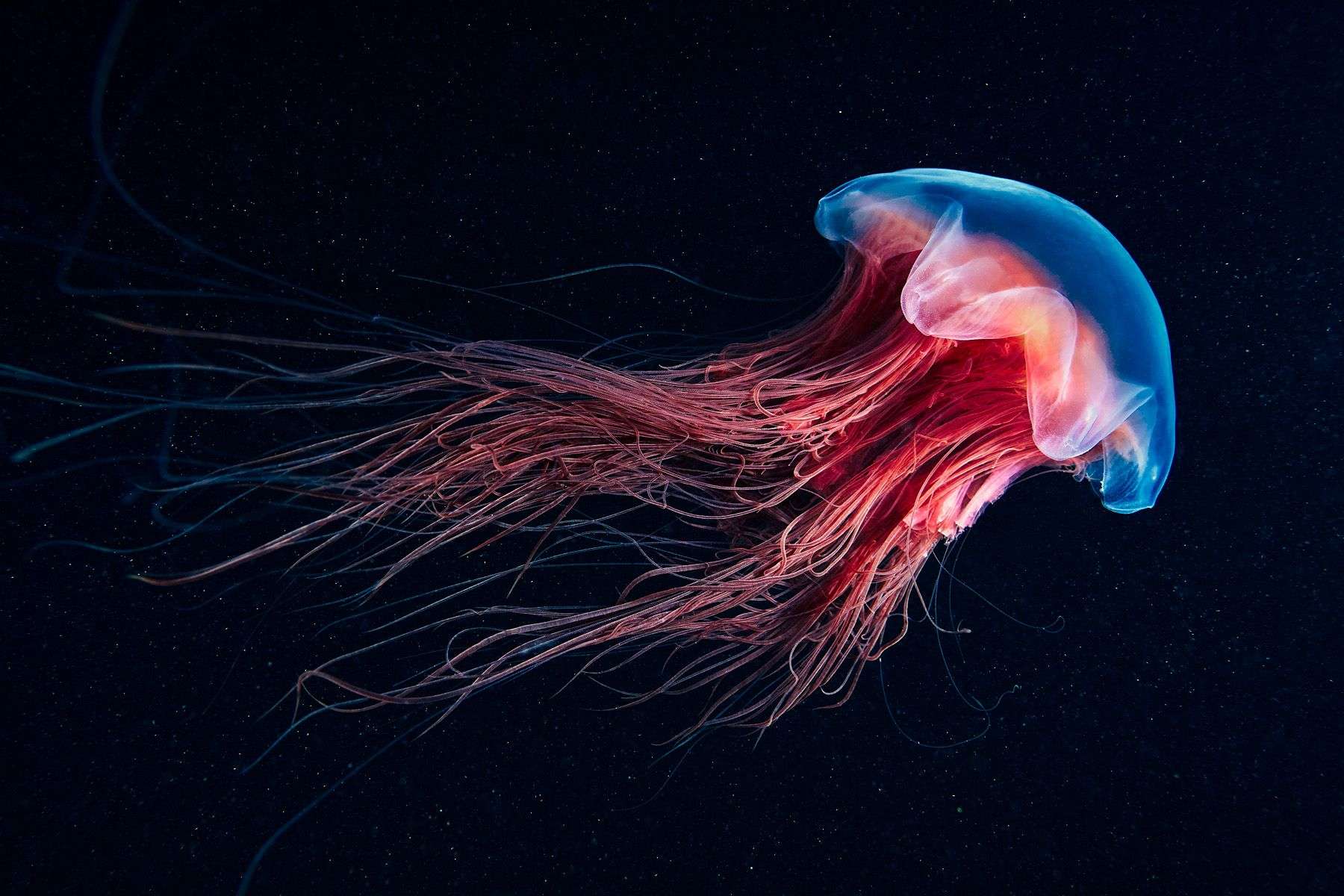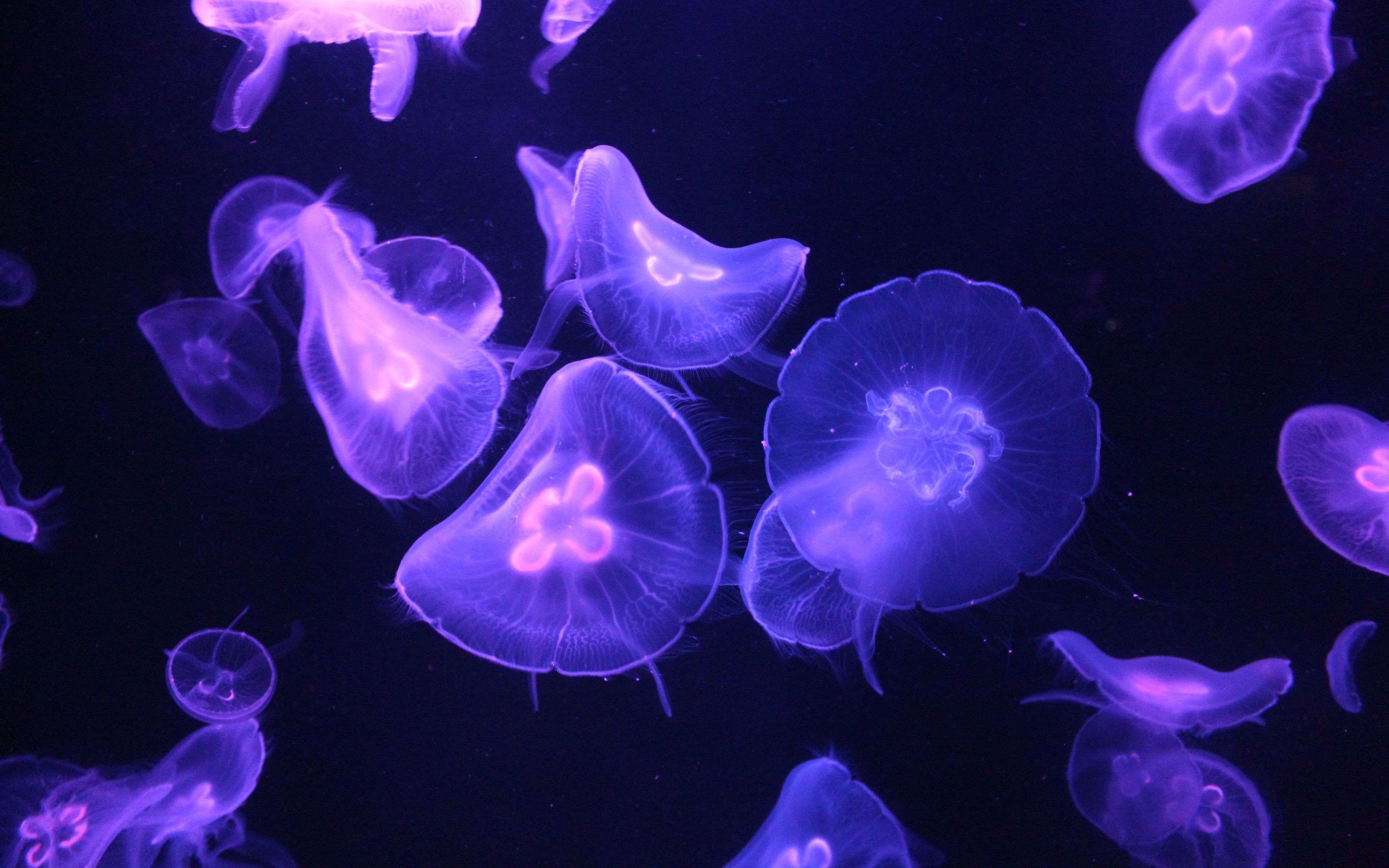Do Jellyfish Stings Leave Scars

Jellyfish Stings
Introduction
Do Jellyfish Stings Leave Scars: Jellyfish, those enigmatic creatures of the sea, have long held our fascination, both for their mesmerizing beauty and their occasionally painful sting. While the burning sensation and discomfort associated with a jellyfish sting are well-documented, a question that often arises is whether these stings leave lasting scars.
The answer, however, is not a straightforward one. Whether a jellyfish sting results in a scar can depend on a multitude of factors, ranging from the type of jellyfish involved, the severity of the sting, individual reactions to the venom, and the steps taken for treatment.
Jellyfish come in various species, and each carries a unique venom profile. Some jellyfish, like the Portuguese Man o’ War, have potent and painful stings that can cause significant skin damage. Others, while still causing discomfort, may not lead to substantial tissue injury. In cases of mild stings, the odds of scarring are relatively low marine ecosystems.
However, more severe stings from certain species can cause necrosis, a condition where the skin and underlying tissues begin to deteriorate. In such instances, scarring is more likely, and it may persist as a long-term reminder of the painful encounter with these marine creatures.

Is jellyfish sting scar permanent?
Even if you are lucky enough to receive treatment in time, the jellyfish sting will still leave behind some nasty effects. These include permanent scarring where the tentacles made contact with your skin. There is also the possibility of nerve damage leading to long-term pain.
The permanence of a jellyfish sting scar depends on various factors, making it a somewhat unpredictable outcome. First and foremost, the type of jellyfish responsible for the sting plays a significant role. Some species, like the Portuguese Man o’ War, are notorious for delivering potent and painful stings, often leading to necrosis and lasting scars. Other jellyfish species, while still causing discomfort, may not result in significant tissue damage or permanent marks.
Individual reactions to jellyfish stings also vary widely. Some people may have heightened sensitivity to the venom, which can result in more severe reactions and an increased likelihood of scarring. Others may experience only temporary discomfort without any long-term skin marks.
Effective and immediate first aid measures are crucial in determining whether a jellyfish sting scar will be permanent. Properly treating a jellyfish sting, such as rinsing the affected area with vinegar to neutralize the stinging cells, can minimize damage and reduce the risk of lasting scars. However, neglecting or improperly managing the wound can exacerbate the injury, potentially leading to permanent skin marks.
In many cases, with timely and appropriate treatment, jellyfish sting scars can fade over time. Scarring can vary in severity, with some individuals experiencing minor and barely noticeable marks, while others may have more prominent and lasting scars. making the permanence of a scar highly individualized. Nevertheless, understanding the nature of the jellyfish species, personal sensitivity, and providing immediate, effective first aid can all contribute to minimizing the long-term impact of a jellyfish sting and, in some cases, prevent permanent scarring.
How long does it take for jellyfish marks to go away?
Minor stings: Severe burning pain will lessen within 1-2 hours. Red blotches and lines often improve in 24 hours. Red lines may last 1-2 weeks.
The duration it takes for jellyfish marks to fade away can vary widely depending on several factors. Firstly, the severity of the jellyfish sting plays a crucial role. Milder stings may result in temporary redness and irritation, which can resolve within a few hours to a couple of days. These minor marks usually disappear relatively quickly and may leave no long-term evidence.
However, more severe stings, especially those from potent jellyfish species like the Portuguese Man o’ War, can lead to necrosis, where the affected skin and tissues deteriorate. In such cases, the marks can persist for a more extended period, ranging from several weeks to several months. The healing process often involves the body gradually repairing the damaged tissues, and the marks may evolve from raw, blistered areas to scars during this time.
Individual factors also come into play. A person’s unique physiology and how their body responds to the venom can affect the duration of the marks, the effectiveness of first aid and aftercare measures, such as using vinegar to neutralize stinging cells or applying appropriate topical treatments, can influence how quickly the marks fade.
In general, proper and timely first aid, coupled with good wound care practices, can expedite the healing process and minimize the time it takes for jellyfish marks to disappear. However, even with the best care, scars may still be a possibility, and these can last longer, sometimes indefinitely. Therefore, while many jellyfish stings are relatively mild and the marks short-lived, it’s crucial to be prepared for a range of outcomes and seek appropriate medical attention if there are concerns about the healing progress or the potential for long-term marks.
Do jellyfish leave a mark?
The intense pain of a jellyfish sting can last 1-2 hours, but the area can remain itchy and marked with raised welts for a few weeks. A jellyfish sting scar can occur in particularly severe cases, in the form of red, brown or purple lines from the points of contact.
The permanence of a jellyfish sting scar depends on various factors, making it a somewhat unpredictable outcome. First and foremost, the type of jellyfish responsible for the sting plays a significant role. Some species, like the Portuguese Man o’ War, are notorious for delivering potent and painful stings, often leading to necrosis and lasting scars. Other jellyfish species, while still causing discomfort, may not result in significant tissue damage or permanent marks.
Individual reactions to jellyfish stings also vary widely. Some people may have heightened sensitivity to the venom, which can result in more severe reactions and an increased likelihood of scarring. Others may experience only temporary discomfort without any long-term skin marks.
Effective and immediate first aid measures are crucial in determining whether a jellyfish sting scar will be permanent. Properly treating a jellyfish sting, such as rinsing the affected area with vinegar to neutralize the stinging cells, can minimize damage and reduce the risk of lasting scars. However, neglecting or improperly managing the wound can exacerbate the injury, potentially leading to permanent skin marks.
In many cases, with timely and appropriate treatment, jellyfish sting scars can fade over time. Scarring can vary in severity, with some individuals experiencing minor and barely noticeable marks, while others may have more prominent and lasting scars. making the permanence of a scar highly individualized. Nevertheless, understanding the nature of the jellyfish species, personal sensitivity, and providing immediate, effective first aid can all contribute to minimizing the long-term impact of a jellyfish sting and, in some cases, prevent permanent scarring.
How do you get rid of jellyfish sting marks?
Most jellyfish stings can be treated as follows:
- Carefully pluck visible tentacles with a fine tweezers.
- Soak the skin in hot water. Use water that’s 110 to 113 F (43 to 45 C). It should feel hot, not scalding.
- Apply 0.5% to 1% hydrocortisone cream or ointment twice a day to the affected skin.
Getting rid of jellyfish sting marks can be a challenging and variable process, as the approach depends on the severity of the sting and individual reactions. For mild jellyfish stings that result in temporary redness, itching, and raised welts, simple home remedies can often help alleviate the discomfort and fade the marks over time. Rinsing the affected area with vinegar can be highly effective in neutralizing any remaining stinging cells, reducing pain, and minimizing the risk of infection, which in turn can contribute to faster healing and the eventual fading of marks. Applying an over-the-counter hydrocortisone cream can help reduce inflammation and itching, further promoting the healing process.
In cases of more severe jellyfish stings that lead to blistering, necrosis, or lasting scars, the treatment process can be more complex. Seeking immediate medical attention is crucial, in some instances, surgical intervention to address the more severe tissue damage. Scarring may be a concern, and specific treatments, such as laser therapy or scar revision surgery, may be suggested to minimize the appearance of scars once the wounds have healed.
Ultimately, the best way to deal with jellyfish sting marks is to take proactive steps to prevent them in the first place. When swimming in areas prone to jellyfish, wearing protective clothing, such as rash guards, and using appropriate repellents can be a useful preventative measure. Always exercise caution in the water, and if a jellyfish sting does occur, immediate first aid can significantly reduce the likelihood of lasting marks. While the healing process may take time, diligent wound care and medical guidance, when necessary, can help minimize the appearance of any scars and ensure a smoother recovery.
Why do jellyfish stings leave a mark?
Jellyfish stings leave a distinctive print of tentacles leaving narrow trail marks. Jellyfish have thousands of stinging cells, known as nematocysts, on their tentacles. The nematocysts release toxins when you bump or brush against them, causing skin irritation, pain, and blisters.
Jellyfish stings leave marks due to a combination of factors, primarily stemming from the complex nature of jellyfish venom and the body’s natural response to the injury. When a jellyfish tentacle comes into contact with human skin, it releases venom-containing stinging cells called nematocysts, which can inject toxins into the victim’s tissues. The severity of the resulting mark depends largely on the type of jellyfish involved, as some species produce more potent venom than others. For example, the Portuguese Man o’ War and certain box jellyfish are known for delivering highly toxic stings that can cause substantial skin damage.
The venom itself can lead to irritation, pain, and inflammation, which may manifest as redness, itching, and raised welts on the skin. In more severe cases, the toxins can cause blistering and necrosis, where the skin and underlying tissues deteriorate. These more severe reactions can result in longer-lasting and more prominent marks, potentially even scars.
The human body’s response to the venom also plays a role in the development of marks. Some individuals may exhibit heightened sensitivity or allergic reactions to jellyfish toxins, leading to more severe symptoms and potentially long-lasting marks.
The proper treatment of a jellyfish sting is crucial in reducing the likelihood of marks. Rinsing the affected area with vinegar can help neutralize the remaining stinging cells and toxins, minimizing further damage, applying hydrocortisone cream can alleviate inflammation and itching, which can aid in the healing process.
Jellyfish stings leave marks due to the interaction between the venom, individual reactions, and the body’s response to the injury. While many jellyfish stings result in temporary marks that fade over time, severe stings can leave lasting scars. Immediate and appropriate first aid, coupled with medical attention when necessary, can help minimize the appearance of marks and facilitate a smoother recovery.
Do jellyfish stingers stay in skin?
Jellyfish stings leave thousands of very tiny stingers called nematocysts in the skin. These stingers can continue to release (or “fire”) jellyfish venom (poison) into the body. Treatment can vary based on the type of jellyfish most common in the area. Often, it’s best to rinse a sting with vinegar.
Jellyfish stingers, or nematocysts, can indeed remain in the skin after a sting, and their presence is a key factor in the ongoing pain and discomfort associated with jellyfish stings. When a jellyfish tentacle comes into contact with human skin, these microscopic, harpoon-like structures located on the tentacles are activated, releasing venom into the victim’s tissues. The venom causes immediate irritation, pain, and inflammation.
What makes nematocysts particularly troublesome is that they can continue to discharge venom even after the initial contact. This can happen if the stingers are activated by pressure or motion, such as when a person attempts to scrape the tentacle away from their skin. As a result, the pain and symptoms of a jellyfish sting can persist or even worsen over time.
To effectively manage a jellyfish sting and minimize the continued presence of nematocysts in the skin, it is essential to deactivate them. Rinsing the affected area with vinegar is a common and effective method for neutralizing these stinging cells. The acetic acid in vinegar prevents nematocysts from further discharging venom, helping to alleviate pain and discomfort. Immersing the affected area in hot water (at a temperature tolerable to the person) is another method that can help reduce the pain and inactivate any remaining stingers.
Jellyfish stingers, or nematocysts, can indeed stay in the skin after a sting, and their ability to continue discharging venom contributes to the persistence of pain and discomfort. Proper and immediate first aid measures, such as using vinegar or hot water, are crucial to deactivate these stinging cells and minimize the ongoing effects of a jellyfish sting.
Do jellyfish heal fast?
Many marine animals, including some jellyfish, can rapidly regenerate tissues in response to injury, and this trait is important for survival.
The healing process after a jellyfish sting varies widely depending on several factors, making it difficult to generalize how fast jellyfish stings heal. The speed of healing primarily depends on the severity of the sting, the type of jellyfish involved, and individual factors. Mild jellyfish stings that result in temporary redness, itching, and raised welts may heal relatively quickly, typically within a few hours to a few days. These minor stings often leave no lasting marks, and the discomfort subsides with time.
However, more severe jellyfish stings, particularly those from highly venomous species like the Portuguese Man o’ War or certain box jellyfish, can take a longer time to heal. The toxins in their venom can cause blistering, necrosis, and significant skin damage, leading to a more extended healing process, which can range from several weeks to several months.
Individual factors, such as personal sensitivity to the venom and overall health, also play a role in determining the pace of healing. Some individuals may recover more quickly, while others may experience prolonged discomfort and recovery.
Proper first aid measures, including rinsing the affected area with vinegar and seeking immediate medical attention if the sting is severe, can expedite the healing process and minimize complications. Adequate wound care practices, such as keeping the wound clean and protected, can also help speed up recovery.
The healing time for jellyfish stings can vary significantly, depending on the severity of the sting, the type of jellyfish involved, individual responses, and the quality of care provided. While mild stings often heal relatively quickly, more severe stings may require a longer recovery period. It’s essential to take prompt and appropriate actions in treating jellyfish stings to ensure a smoother and faster healing process.
Is Aloe good for jellyfish stings?
Although it is a little known remedy, the use of aloe vera when we have a sting is the fastest and most effective way to combat this condition.
Aloe vera, known for its soothing and anti-inflammatory properties, is often suggested as a home remedy for relieving the discomfort associated with jellyfish stings. While aloe vera can provide some relief, its effectiveness can be limited, especially in the case of severe stings from highly venomous jellyfish species. Aloe vera can help reduce itching, cool the affected area, and provide a mild analgesic effect, making it useful for alleviating the initial pain and discomfort associated with milder stings. However, it may not be sufficient to counteract the more potent toxins from certain jellyfish.
For more severe stings, especially those from jellyfish like the Portuguese Man o’ War or box jellyfish, it’s essential to prioritize other immediate treatments, such as rinsing the area with vinegar to neutralize stinging cells, which is a more effective way to deactivate the venom. Seeking medical attention promptly is crucial when dealing with severe jellyfish stings, as these cases often require specialized care and, in some instances, may lead to lasting scars or complications.
Aloe vera can offer some relief for the pain and discomfort of mild jellyfish stings, but its effectiveness may be limited in the case of more severe stings. Proper first aid, such as using vinegar, is more critical for immediate symptom relief, and seeking medical attention is necessary when dealing with potentially dangerous jellyfish species to ensure appropriate care and minimize long-term complications.

Conclusion
The question of whether jellyfish stings leave scars is a multifaceted one, with no single definitive answer. It hinges on a combination of factors, and understanding these variables can help demystify the outcome of such encounters.
The type of jellyfish involved plays a pivotal role. While some species deliver painful stings that can result in significant skin damage and potential scarring, others cause less harm and may leave no lasting marks. The Portuguese Man o’ War, for instance, is notorious for its potent venom, capable of causing necrosis and lasting scars when not adequately treated.
Individual reactions to jellyfish stings also vary widely. Some individuals may exhibit heightened sensitivity to the venom, experiencing more severe reactions and an increased likelihood of scarring. Others may only endure temporary discomfort without any long-term skin marks.
Effective first aid measures are essential in shaping the outcome. Promptly and correctly treating a jellyfish sting, such as by rinsing the affected area with vinegar to neutralize treatments jellyfish, can mitigate damage and reduce the risk of scarring. Neglecting appropriate care, on the other hand, may enhance the chances of enduring scars.



